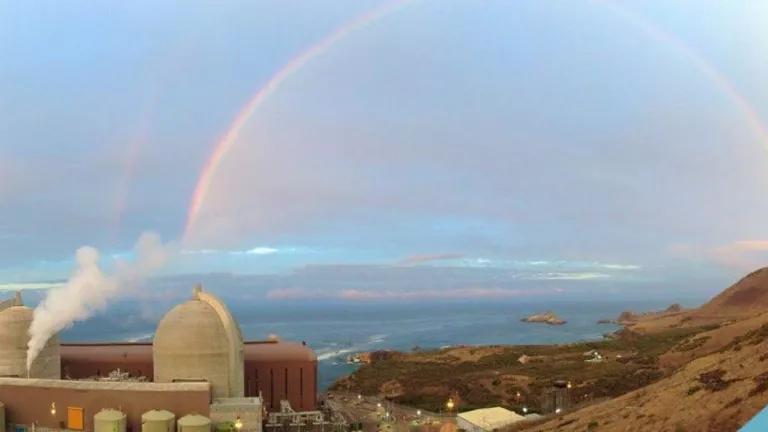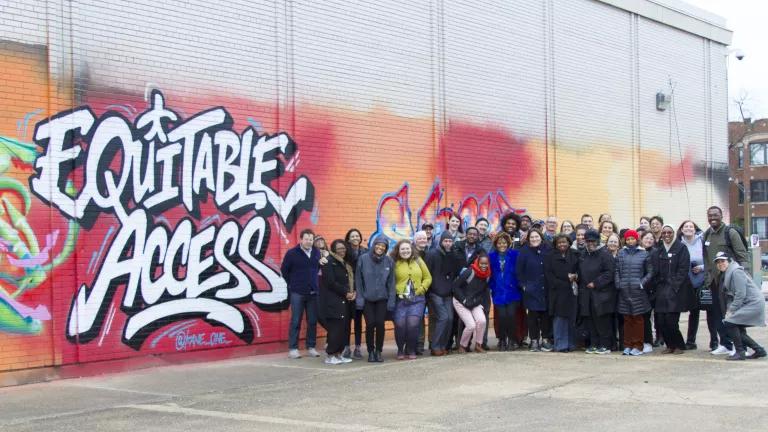Important Deadline for California Nuclear Plant Retirement

There is an important state regulatory deadline this week for the historic and widely supported Joint Proposal to retire and replace California’s last remaining nuclear plant, Diablo Canyon, with lower-cost zero-carbon resources within nine years.
The California Public Utilities Commission (CPUC) will accept comments through tomorrow (Sept. 15) on the plan to replace the two reactors at the Pacific Gas & Electric facility 250 miles south of San Francisco in August 2025 upon expiration of its U.S. Nuclear Regulatory Commission licenses.
The Joint Proposal –which was negotiated by PG&E, the plant’s principal union, NRDC, and Friends of the Earth, among others –would replace Diablo Canyon’s electricity with energy efficiency, renewable resources like wind and solar, demand response (compensating customers for altering their energy use at specific times) and using energy storage. PG&E, one of the nation’s largest combination natural gas and electric utilities, serves 16 million people in northern and central California.
The Joint Proposal has widespread support, but it also has drawn naysayers. The loudest are those who contend a nuclear plant cannot be replaced without using fossil fuels, which would increase carbon emissions. However, as I’ve written before, that is exactly why this is a historic proposal. The parties to it have committed to doing all they can to make sure that no fossil fuels replace generation from the giant plant near San Luis Obispo. The ultimate decisions rest, of course, with the CPUC, which will be supervising the process.
Other questions likely will be raised, including:
How much will the Joint Proposal increase customers’ bills, compared to the cost of continuing to run the plant past 2025?
ANSWER: NRDC estimates that the Joint Proposal will save at least $1 billion, compared to the cost of refurbishing the plant and extending its life for 20 years. PG&E acknowledged in its CPUC filing that the costs of operating Diablo Canyon beyond the 2025 license expiration would exceed 10 cents per kilowatt-hour , more than twice what many had expected. The biggest contributors are operations and maintenance costs and upgrades to the plant’s obsolete cooling system.
Why should all PG&E customers share in the costs of replacing Diablo Canyon with zero- carbon resources?
ANSWER: For customers who are served by other providers, like Community Choice Aggregators, the PG&E filing proposes a way to opt out of PG&E procurement, as long the alternative providers make commitments to meet renewable energy goals at least as demanding as those to which PG&E itself will be held under the Joint Proposal. (Community Choice Aggregation is a state policy that enables local governments to aggregate electricity demand within their jurisdictions in order to procure alternative energy supplies while maintaining the existing electricity provider for transmission and distribution services.)
Why should the replacement process begin now, since the two units of Diablo Canyon aren’t expected to retire before the end of 2024?
ANSWER: Diablo Canyon accounts for about 20 percent of PG&E’s system-wide power use (and almost one-tenth of California’s in-state generation). Years of advance planning and investment are needed to ensure that full zero-carbon replacement can be achieved on time.
Why doesn’t the PG&E filing provide for acquiring all the power that will be needed to replace Diablo Canyon?
ANSWER: As explained in detail in an earlier post, it would be financially irresponsible to try to specify all the replacement resources nine years from the plant’s scheduled retirement, or to determine who should pay for them. Moreover, at least part of the replacement process will involve entities other than PG&E, like state officials with authority over building and equipment efficiency standards and customers installing solar panels on their rooftops, which will help to fill the gap left by Diablo’s retirement. The PG&E filing, which outlines the first stage of acquiring replacement resources, is a prudent first step in the replacement process. For those who argue that PG&E and the other parties to the Joint Proposal are simply saying “trust us,” state regulators will be overseeing every step of a very public process.
Why should PG&E be able to charge customers for the cost of retraining Diablo Canyon’s 1,500 employees and making payments to the nearby community?
ANSWER: The plant has provided more than three decades of reliable service to the entire PG&E system, and it is reasonable for all customers to share in the costs of fair treatment for its workers and community. The CPUC will rigorously review all proposed payments before giving PG&E permission to make them.



